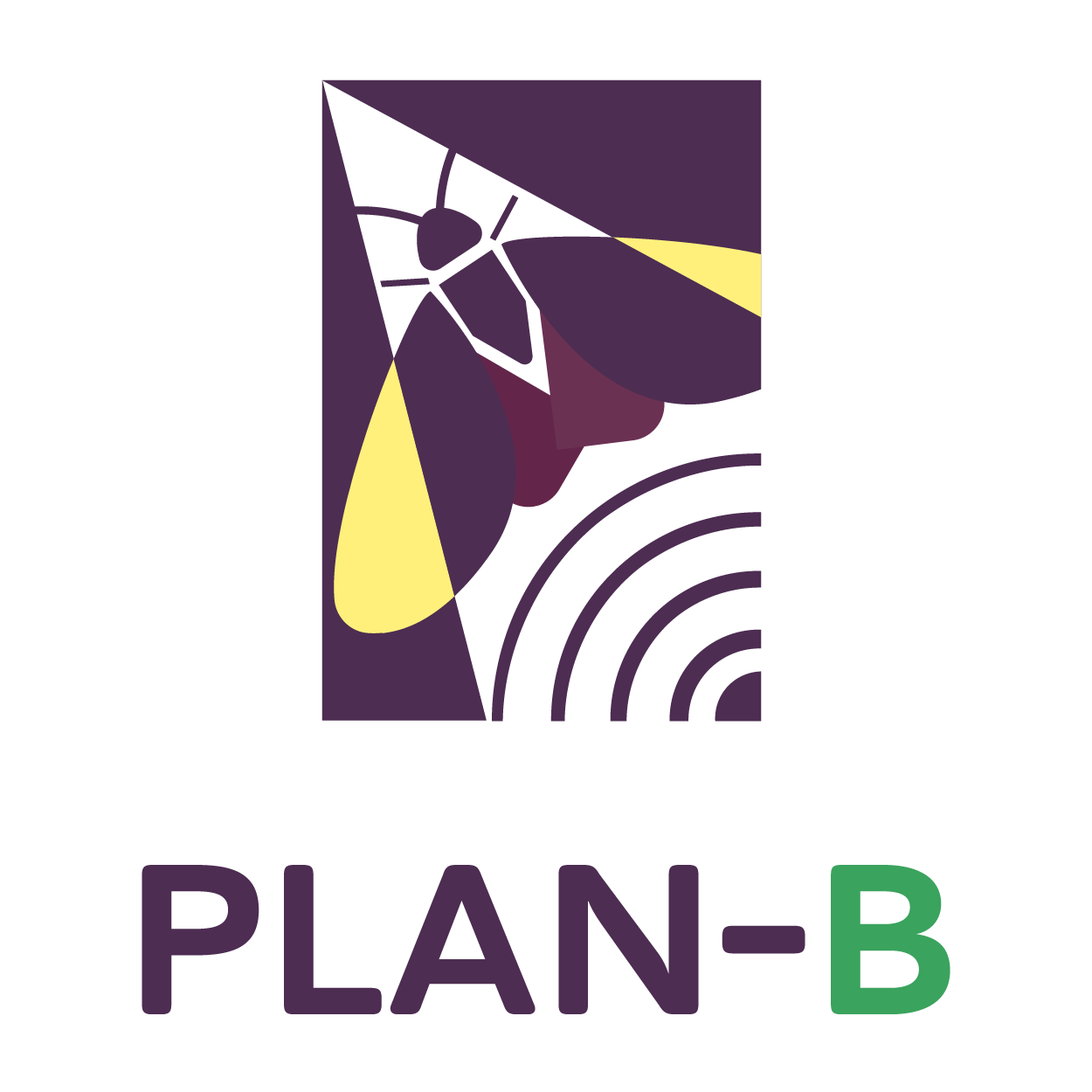
The Path Towards Addressing Adverse Impacts of Light and Noise Pollution on Terrestrial Biodiversity and Ecosystems
Meet the Consortium
![[PLAN-B]consortium_UGENT](https://plan-b-project.eu/wp-content/uploads/2024/02/PLAN-Bconsortium_UGENT.jpg)
UGENT serves as the coordinating institution with direct responsibility for the scientific and administrative coordination of PLAN-B’s scientific activities. Two faculties are involved in the consortium: the Faculty of Law and Criminology (Department of European, Public and International Law) and the Faculty of Engineering and Architecture (Department of Information Technology).
UGENT will play an active role in formulating policy proposals and devising regulatory solutions for mitigating light and noise pollution across various levels, encompassing international, EU, and national contexts. Additionally, UGent will create models and technological solutions for measuring and alleviating noise pollution.
Responsibilities of UGent in PLAN-B include ensuring smooth collaboration among all consortium members and guaranteeing the timely delivery of all necessary project tasks.
UGENT Faculty of Law and Criminology (Department of European, Public and International Law)
UGENT Faculty of Engineering and Architecture (Department of Information Technology)
Meet us
Geert Van Hoorick, professor in the fields of administrative law and environmental law at Ghent University, Center for Environmental and Energy Law. He is responsible for subjects in the field of environmental law (including nature conservation law), notarial administrative law, agricultural law, and animal welfare law. He is a member of the IUCN Environmental Law Commission and the European Environmental Law Forum (EELF). From October 1, 2022, he will be department chair of the European, Public and International Law department.
Yana Yakushina, in-depth expert in analysis of legal and policy frameworks to identify the adequate framework to address adverse impacts of light pollution on biodiversity and ecosystem services.
Timothy Van Renterghem, principal investigator, responsible for anthropogenic sound exposure mapping in natural areas in Europe.
Professor Dick Botteldooren, Advising on any aspects related to noise and its impact on biodiversity. Noise exposure assessment models.
![[PLAN-B]consortium_Gdanns_tech](https://plan-b-project.eu/wp-content/uploads/2024/02/PLAN-Bconsortium_Gdanns_tech.jpg)
The participation o Gdansk Tech in PLAN-B f is an inter-faculty effort between the Faculty of Architecture and the Faculty of Civil and Environmental Engineering of the Gdańsk University of Technology.
Meet us
Karolina M. Zielińska-Dąbkowska Ph.D.and Paweł Tysiac Ph.D.
Faculty of Architecture and the Faculty of Civil and Environmental Engineering of the Gdańsk University of Technology.
![[PLAN-B]consortium_MLU](https://plan-b-project.eu/wp-content/uploads/2024/02/PLAN-Bconsortium_MLU.jpg)
The development of the European situation analysis is led by this research institute and is fed by contributions from all other partners in a highly collaborative approach.
The university will provide significant contribution to Work Packages 1, 2, 5, 6.
Meet us
Reinhard Klenke, PhD.
He studied biology (ecology/animal physiology) at the University of Leipzig and obtained my PhD in ecology at the University of Greifswald, Germany.
In the past he coordinated the species action plan for the Eurasian otter (Lutra lutra) in Saxony (Germany), took part in or led several national funded research projects about landscape fragmentation, forest conversion, climate change mitigation in baltic lowland forests or as well as the National Biodiversity Strategy of Germany, and managed the EU FP5 FRAP project.
Currently he’s employed as researcher and scientific project manager of the EU FP7 project SCALES at the Department of Conservation Biology of the Helmholtz Centre for Environmental Research in Leipzig (Germany).
His research mainly focuses on population ecology and conservation of larger vertebrates (birds and mammals), and how they are influenced by changes in landscape structure and land use activities.
![[PLAN-B]consortium_salford](https://plan-b-project.eu/wp-content/uploads/2024/02/PLAN-Bconsortium_salford.jpg)
Within the context of PLAN-B, researchers will provide scientific coordination across the work programme, leading Work Package 1 (Mechanisms of light and noise pollution impacts on terrestrial biodiversity and ecosystem services) and contributes to task delivery within the other PLAN-B Work Packages.
Project deliverables for which Salford University is responsible include:
- Systematic review of light and noise impacts on terrestrial biodiversity and ecosystem services,
- Guidelines for assessing the impact of light and noise on terrestrial wildlife.
Meet us
Professor Mike Wood (University of Salford, UK) is an expert in the impacts of pollution on biodiversity.
He has over two decades experience in the development of pollution impact assessment tools and approaches that environmental regulators, industry and other stakeholders use to inform decision-making.
![[PLAN-B]consortium_UCM](https://plan-b-project.eu/wp-content/uploads/2024/02/PLAN-Bconsortium_UCM.jpg)
The Complutense University (Madrid – Spain) will lead the creation of a reliable map of the artificial light at night (current are fake).
Monitoring light pollution by using scientific models and citizen science approach.
Meet us
Alejandro Sánchez de Miguel
is the university researcher at PLAN-B, has extensive experience in the analysis of light pollution and in the relationship between science and citizenship by coordinating citizen science projects such as Cities at Night for the last 10 years.
![[PLAN-B]consortium_ibercivis](https://plan-b-project.eu/wp-content/uploads/2024/02/PLAN-Bconsortium_ibercivis.jpg)
The Ibercivis Foundation (Zaragoza – Spain) will be involved in the assembly of the CoP’s of the piloting (Communities of Practice) that will run citizen campaigns to help monitorice light pollution in the designed areas.
Ibercivis will also coordinate the project’s communication and dissemination strategy, included in Work Package 6.
Meet us
Francisco Sanz is the Executive Director of the Ibercivis Foundation and has more than 15 years exploring and implementing technologies to engage communities across Europe in citizen science projects.
Daniel Lisbona and Asun Iguarbe have coordinate the communication strategy of several citizen science projects in Spain and Europe in the last years.
![[PLAN-B]consortium_uemg](https://plan-b-project.eu/wp-content/uploads/2024/02/PLAN-Bconsortium_uemg.jpg)
It’s expected their contribution specially in presenting results for public polices, the commitment in the minimization of light and noise pollution on biodiversity and ecosystems and the promotion of a better human and wildlife coexistence culture.
One of the pilos of the project will be carried out in the neotropical region of Brazil.
Meet us
Alexandre Túlio Amaral Nascimento
Camila Teixeira
![[PLAN-B]consortium_-Lunds_universitet](https://plan-b-project.eu/wp-content/uploads/2024/02/PLAN-Bconsortium_-Lunds_universitet.jpg)
The Department of Biology of Lund University will take care of measurements of light pollution.
Its lab has developed a novel method for quantifying light pollution on site from the animals’s positions.
Meet us
Dan-E. Nilsson
![[PLAN-B]consortium_UKCEH](https://plan-b-project.eu/wp-content/uploads/2024/02/PLAN-Bconsortium_UKCEH.jpg)
UKCEH (UK Centre for Ecology & Hydrology) will lead the development of the PLAN-B Light and Noise pollution impacts knowledge base and, as the project progresses, lead the production of the Strategic Research Agenda for light and noise pollution impacts on terrestrial wildlife, biodiversity and ecosystem services.
They will also adapt models developed initially to assess human health benefits, so they can be used to calculate how green infrastructure (trees, grass, lakes, etc.) can help reduce the effects of light and noise pollution on biodiversity.
Meet us
Catherine Barnett, environmental contaminant scientist at UKCEH and the UKCEH project manager for PLAN-B
Laurence Jones
Jacky Chaplow
![[PLAN-B]consortium_waita](https://plan-b-project.eu/wp-content/uploads/2024/02/PLAN-Bconsortium_waita.jpg)
The Waita Research and Conservation Institute is a non-governmental, non-profit organisation, founded by professionals who strive to improve the conservation status of Brazilian biodiversity.
Biologists, veterinarians, students and volunteers from various areas carry out research projects and actions aimed primarily at the conservation of species victims of wildlife trafficking, developing a serious, consistent and differentiated work, becoming a reference in its area of activity.
Meet us
![[PLAN-B]consortium_tph](https://plan-b-project.eu/wp-content/uploads/2024/02/PLAN-Bconsortium_tph.jpg)
The Swiss Tropical and Public Health Institute (Swiss TPH) is a world-leading institute in global health with a particular focus on low- and middle-income countries.
950 staff and students from 95 nations work at Swiss TPH focusing on climate change, environment and health, infectious and non-communicable diseases, societal and cultural context, and health systems and policies. Our expertise spans from the bench to the field, from basic to operational, from molecular to spatial, and from genes to health systems. We treasure partnership, constantly go the extra mile and contribute to the Sustainable Development Goals.
![[PLAN-B]consortium_miasto](https://plan-b-project.eu/wp-content/uploads/2024/02/PLAN-Bconsortium_miasto.jpg)
is Poland’s sixth largest city and the largest port city in Poland. Between 1975 and 1998 it was the capital of the defunct Gdansk Voivodeship, and since 1998 it has been the capital of the Pomeranian Voivodeship.
The municipality of Gdansk will actively collaborate in PLAN-B’s activities through light and noise pollution measurement campaigns in several of its areas, as well as outdoor recreational activities and music festivals.
![[PLAN-B]-LOGOS](https://plan-b-project.eu/wp-content/uploads/2024/02/PLAN-B-LOGOS.jpg)
